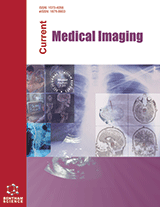Abstract
Background: Supernumerary kidney is an accessory organ with its own encapsulated parenchyma, blood vessels and ureters, either separated from the normal kidney or connected to it via fibrous tissue and ectopic kidney is a migration abnormality of the kidney. Here, we have evaluated a rare case of the supernumerary and ectopic kidney with DMSA, MAG3 and also CT fusion of the images.
Methods: The absolute divided renal function was calculated for each kidney by DMSA. The MAG3 scintigraphy showed no obstruction in the ureteropelvic junction. Furthermore, the renogram curve and Tmax and time to ½ values were assessed. Two months after the conventional scintigraphies, the patient was referred to a CT scan and the fusion of DMSA SPECT and CT data was generated on a workstation.
Results: The ectopic supernumerary kidney was functioning very well except a small hypoactive area, visible on DMSA, which was possibly a minimal pelvicalyceal dilatation. However, consequent CT scan did not show any pathology.
Conclusion: It is important to evaluate particularly complicated or rare cases with multimodality systems with 3D or fusion techniques for the accurate diagnosis.
Keywords: Ectopic kidney, supernumerary kidney, pelvic kidney, scintigraphy, fusion imaging, CT.
[http://dx.doi.org/10.5772/intechopen.73641]
[http://dx.doi.org/10.1016/S0022-5347(17)54457-2] [PMID: 7265371]
[http://dx.doi.org/10.1016/j.eucr.2016.11.010] [PMID: 28180090]
[http://dx.doi.org/10.1016/S0022-5347(17)58231-2] [PMID: 562428]
[http://dx.doi.org/10.1016/S0022-5347(17)70814-2]
[http://dx.doi.org/10.1002/bjs.1800580116] [PMID: 5539248]
[PMID: 9277786]
[http://dx.doi.org/10.1089/end.2007.9945] [PMID: 17867938]
[PMID: 3715495]
[http://dx.doi.org/10.1155/2017/6141734] [PMID: 28316612]
[http://dx.doi.org/10.2174/157340511796411159]
[http://dx.doi.org/10.1016/j.urology.2017.12.003] [PMID: 29288785]
[http://dx.doi.org/10.2174/1573405609666131112193016]
[http://dx.doi.org/10.1038/ki.2015.65] [PMID: 25738253]
[http://dx.doi.org/10.1016/j.urology.2014.03.042] [PMID: 24962843]
[http://dx.doi.org/10.1155/2012/390912] [PMID: 23304625]
















